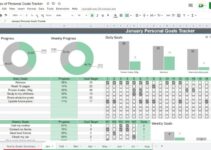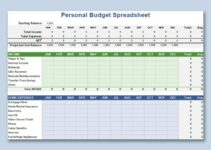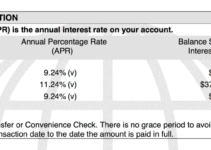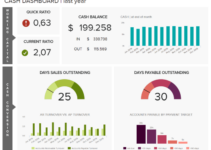Personal Finance Planning Tools 2024: Dive into the realm of financial empowerment, where cutting-edge tools illuminate your path towards achieving your monetary aspirations. In this comprehensive guide, we’ll unveil the market landscape, explore tool types, delve into key features, and highlight the benefits and challenges of leveraging these indispensable resources.
Embark on a journey of financial clarity and control, as we unlock the secrets to effective personal finance planning.
Personal Finance Planning Tools Market Overview
The personal finance planning tools market is a rapidly growing industry that is expected to reach a value of over $1.5 billion by 2024. This growth is being driven by a number of factors, including the increasing popularity of online banking and financial management tools, the rising cost of living, and the growing awareness of the importance of financial planning.
Key trends in the personal finance planning tools market include the increasing adoption of mobile apps, the integration of artificial intelligence (AI) and machine learning (ML), and the growing popularity of robo-advisors. These trends are making it easier for people to manage their finances and make informed financial decisions.
Challenges
Despite the rapid growth of the personal finance planning tools market, there are a number of challenges that the industry faces. These challenges include the lack of financial literacy among consumers, the high cost of some tools, and the security concerns associated with online financial management.
Opportunities
Despite the challenges, there are a number of opportunities for growth in the personal finance planning tools market. These opportunities include the growing demand for financial planning services, the increasing adoption of mobile apps, and the growing popularity of robo-advisors.
Market Size and Growth Rate
The personal finance planning tools market is a global market with a presence in all major regions. The market is expected to grow at a CAGR of over 10% from 2019 to 2024.
Competitive Landscape
The personal finance planning tools market is a competitive market with a number of large and small players. Some of the key players in the market include Intuit, Mint, and YNAB.
Types of Personal Finance Planning Tools: Personal Finance Planning Tools 2024

Personal finance planning tools come in a variety of shapes and sizes, each designed to meet specific needs. From budgeting apps to investment calculators, these tools can help you manage your money more effectively and reach your financial goals.
Budgeting Tools
Budgeting tools help you track your income and expenses, identify areas where you can save money, and create a plan for how to allocate your resources. There are many different budgeting tools available, including:
- Spreadsheets:Spreadsheets are a versatile budgeting tool that allows you to create a customized budget that meets your specific needs. However, they can be time-consuming to set up and maintain.
- Budgeting apps:Budgeting apps are a convenient way to track your spending and create a budget. They are typically easy to use and offer a variety of features, such as automatic expense tracking and reminders.
- Envelope system:The envelope system is a simple but effective way to budget. You allocate a specific amount of cash to each category, such as groceries, entertainment, and savings. Once the money in an envelope is gone, you can’t spend any more in that category.
The best budgeting tool for you depends on your individual needs and preferences. If you are comfortable with spreadsheets, a spreadsheet-based budget may be a good option. If you want a more convenient option, a budgeting app may be a better choice.
And if you prefer a simple and hands-on approach, the envelope system may be right for you.
Investment Tools
Investment tools help you make informed decisions about how to invest your money. These tools can provide you with information about different investment options, such as stocks, bonds, and mutual funds. They can also help you track your investments and calculate your returns.
- Investment calculators:Investment calculators can help you estimate the potential return on your investments. They can also help you compare different investment options.
- Investment research tools:Investment research tools provide you with information about different investment options. This information can help you make informed decisions about where to invest your money.
- Robo-advisors:Robo-advisors are automated investment platforms that provide personalized investment advice and portfolio management. They are a good option for investors who want a hands-off approach to investing.
The best investment tool for you depends on your investment goals and risk tolerance. If you are new to investing, an investment calculator can be a helpful tool to get started. If you are more experienced, investment research tools can provide you with the information you need to make informed investment decisions.
And if you want a hands-off approach, a robo-advisor may be a good option.
Features of Personal Finance Planning Tools

Personal finance planning tools offer various features that simplify managing finances and achieving financial goals. These features range from budgeting and expense tracking to investment analysis and tax optimization. Understanding these features is crucial for choosing the right tool and maximizing its benefits.
Key Features
- Budgeting and Expense Tracking:These tools allow you to create and track budgets, categorize expenses, and monitor cash flow. They help identify spending patterns, reduce unnecessary expenses, and stay within financial limits.
- Investment Analysis:Some tools provide investment tracking, portfolio management, and market analysis. They offer insights into potential investments, help optimize portfolios, and track performance over time.
- Debt Management:These tools assist in managing debt by providing repayment plans, tracking progress, and calculating interest savings. They help consolidate debt, reduce interest charges, and improve credit scores.
- Tax Optimization:Advanced tools offer tax planning features, such as tax calculators, deduction tracking, and retirement account analysis. They help minimize tax liability, maximize deductions, and plan for tax-efficient investments.
- Financial Forecasting and Planning:These tools project future cash flow, expenses, and income. They enable users to simulate financial scenarios, plan for retirement, and make informed decisions about financial goals.
- Goal Tracking:Personal finance planning tools often include goal-setting features. They allow users to define financial objectives, track progress, and receive reminders or alerts to stay motivated.
- Data Security:Reputable tools prioritize data security by using encryption, multi-factor authentication, and secure data storage. They ensure the privacy and confidentiality of sensitive financial information.
The features offered by personal finance planning tools are essential for effective financial management. They provide insights, automation, and support to help individuals make informed financial decisions, achieve their goals, and secure their financial well-being.
Benefits of Using Personal Finance Planning Tools

Harnessing the power of personal finance planning tools empowers individuals to take control of their financial well-being. These tools offer a plethora of advantages that simplify financial management and pave the way for achieving financial goals.
Enhanced Financial Awareness
Personal finance planning tools provide a comprehensive overview of one’s financial situation, fostering a clear understanding of income, expenses, assets, and debts. By tracking financial transactions, these tools offer insights into spending patterns and areas where adjustments can be made to optimize financial health.
Budgeting and Forecasting
Budgeting is a cornerstone of financial planning, and these tools facilitate the creation and adherence to budgets. They enable users to allocate funds effectively, prioritize expenses, and anticipate future cash flow. This proactive approach ensures financial stability and prevents overspending.
Goal Setting and Tracking
Personal finance planning tools assist in setting realistic financial goals, whether it’s saving for a down payment on a house, retiring comfortably, or funding a child’s education. These tools track progress towards goals, providing motivation and accountability.
Debt Management
Managing debt can be daunting, but personal finance planning tools simplify the process. They help users track debt balances, interest rates, and payment due dates. These tools also provide insights into debt consolidation options and strategies for reducing interest charges.
Investment Tracking
For those venturing into the world of investments, personal finance planning tools offer a centralized platform to track investment portfolios. They provide real-time updates on market performance, dividend payments, and capital gains. This information empowers users to make informed investment decisions and optimize their returns.
Tax Optimization
Tax planning is a crucial aspect of financial management. Personal finance planning tools can assist in estimating tax liability, identifying potential deductions, and optimizing tax strategies. By leveraging these tools, individuals can minimize tax burdens and maximize their financial gains.
Challenges of Using Personal Finance Planning Tools
Despite their benefits, personal finance planning tools can present certain challenges. Identifying and addressing these challenges is crucial for maximizing the effectiveness of these tools.
One challenge is the potential for data entry errors. Manual input of financial information can lead to mistakes, which can compromise the accuracy of the tool’s analysis and recommendations.
Another challenge is overreliance on the tool. While these tools can provide valuable insights, it’s important to remember that they are not a substitute for human judgment. Relying solely on the tool’s recommendations without considering personal circumstances can lead to suboptimal financial decisions.
Complexitycan also be a challenge, especially for tools with advanced features. Navigating complex interfaces and understanding the tool’s functionality can be daunting for users who are not familiar with financial concepts.
Security concernsare another consideration. Personal finance planning tools often require users to provide sensitive financial information. It’s essential to ensure that the tool is secure and protects user data from unauthorized access.
Finally, the costof personal finance planning tools can be a barrier for some users. While many tools offer free basic features, advanced features and premium services often come with a subscription fee.
Trends in Personal Finance Planning Tools
The personal finance planning tools industry is constantly evolving, with new trends emerging all the time. These trends are shaping the future of the industry and making it easier for people to manage their finances.
One of the most significant trends in recent years has been the rise of artificial intelligence (AI). AI-powered tools can help people with a variety of tasks, such as budgeting, tracking spending, and investing. These tools can learn from a person’s financial data and provide personalized recommendations.
They can also help people make better decisions about their finances by providing insights and analysis.
AI-Powered Tools
- Provide personalized recommendations
- Help make better decisions
- Offer insights and analysis
Another trend is the increasing popularity of mobile-first tools. These tools are designed to be used on smartphones and tablets, making it easy for people to manage their finances on the go. Mobile-first tools often offer a simplified user interface and features that are tailored to the needs of mobile users.
Mobile-First Tools
- Designed for smartphones and tablets
- Simplified user interface
- Features tailored to mobile users
Finally, there is a growing trend towards the use of open banking. Open banking allows third-party developers to access a person’s financial data with their permission. This data can be used to create new and innovative personal finance planning tools.
Open banking is making it easier for people to manage their finances and get the most out of their money.
Open Banking
- Allows third-party developers to access financial data
- Creates new and innovative tools
- Makes it easier to manage finances
These are just a few of the trends that are shaping the future of personal finance planning tools. As the industry continues to evolve, we can expect to see even more innovative and helpful tools emerge.
Case Studies of Effective Personal Finance Planning Tools
Personal finance planning tools have revolutionized the way individuals manage their finances. These tools offer a range of features that help users track expenses, create budgets, and plan for the future. In this section, we will explore case studies of some of the most effective personal finance planning tools available.
Mint
- Features:Budgeting, expense tracking, bill reminders, investment tracking, credit score monitoring
- Benefits:Easy-to-use interface, automatic expense categorization, personalized budgeting recommendations
- Challenges:Limited customization options, occasional glitches
Mint is a popular personal finance planning tool that has helped millions of users manage their finances. Its intuitive interface and comprehensive features make it an excellent choice for both beginners and experienced users.
One of the most notable features of Mint is its automated expense categorization. This feature uses machine learning to automatically categorize transactions, making it easy for users to track their spending habits.
Mint also offers personalized budgeting recommendations based on the user’s income and spending patterns. This feature can help users create realistic budgets and avoid overspending.
YNAB (You Need a Budget)
- Features:Zero-based budgeting, envelope system, debt repayment tracking
- Benefits:Effective for debt repayment, promotes financial discipline, easy-to-understand principles
- Challenges:Steep learning curve, requires regular maintenance
YNAB is a personal finance planning tool that uses the zero-based budgeting method. This method requires users to assign every dollar of income to a specific category, such as expenses, savings, or debt repayment.
YNAB’s envelope system is a powerful tool for managing debt. This system allows users to create virtual envelopes for each debt and allocate funds to those envelopes. As users make payments, the balances in the envelopes decrease, providing a visual representation of progress towards debt repayment.
YNAB has a steep learning curve, but its clear principles and effective features make it a valuable tool for those who are committed to improving their financial habits.
Personal Capital, Personal Finance Planning Tools 2024
- Features:Investment tracking, retirement planning, cash flow analysis, net worth tracking
- Benefits:Comprehensive financial planning tools, personalized investment recommendations, access to financial advisors
- Challenges:High fees for premium features, limited budgeting tools
Personal Capital is a comprehensive personal finance planning tool that offers a wide range of features for managing finances. Its investment tracking tools allow users to track the performance of their investments and make informed decisions.
Personal Capital also offers retirement planning tools that help users estimate their retirement income and expenses. This feature can help users create a realistic plan for their financial future.
While Personal Capital offers a wide range of features, its premium features come with high fees. Additionally, its budgeting tools are limited compared to other personal finance planning tools.
Conclusion
Personal finance planning tools can be a valuable resource for individuals looking to improve their financial management. These tools offer a range of features that can help users track expenses, create budgets, and plan for the future. By choosing the right tool for their needs, individuals can take control of their finances and achieve their financial goals.
Closing Summary
As we conclude our exploration of Personal Finance Planning Tools 2024, remember that financial success is not a destination but an ongoing pursuit. Embrace the power of these tools, stay informed about emerging trends, and never cease to refine your financial strategies.
With dedication and the right tools at your disposal, the path to financial well-being becomes a clear and achievable goal.
FAQ Guide
Q: What are the key trends shaping the personal finance planning tools market?
A: Automation, personalization, and the rise of artificial intelligence are transforming the market, enhancing user experience and providing tailored financial insights.
Q: How can personal finance planning tools help me achieve my financial goals?
A: These tools provide budgeting assistance, investment tracking, debt management, and personalized recommendations, empowering you to make informed financial decisions and stay on track towards your objectives.
Q: What are some challenges associated with using personal finance planning tools?
A: Data security, tool complexity, and the need for financial literacy can pose challenges. However, choosing reputable tools and educating yourself can mitigate these concerns.








